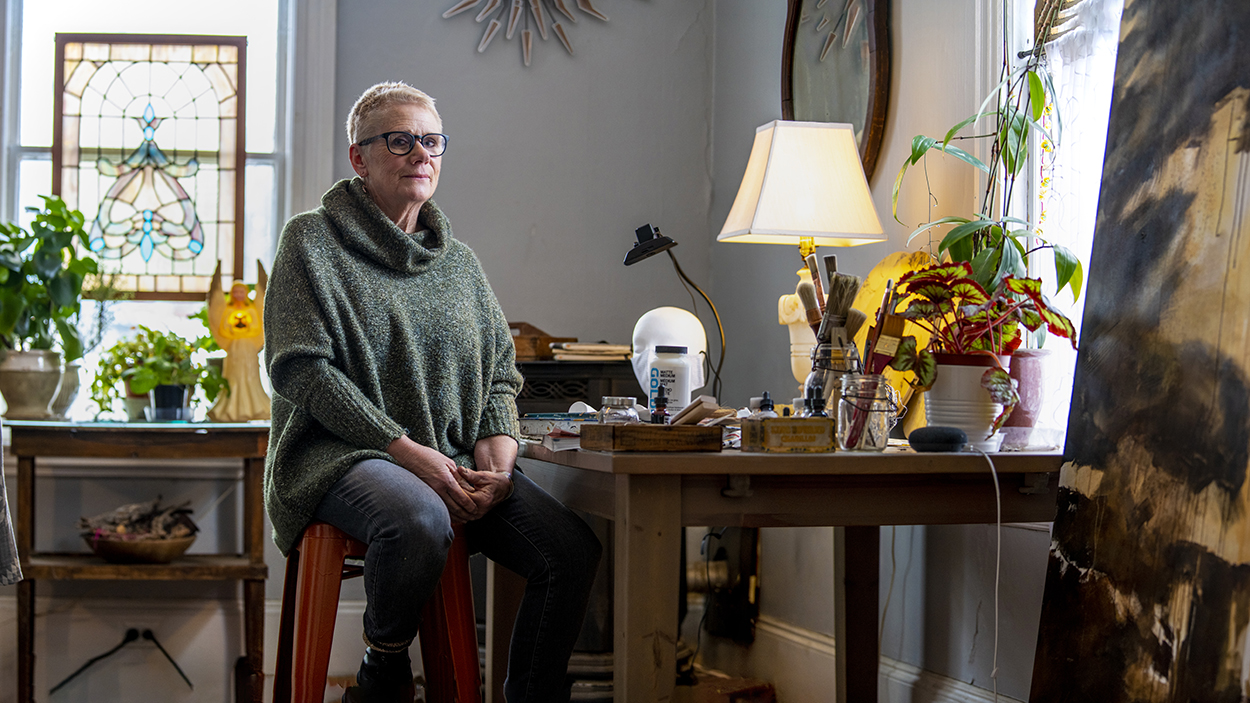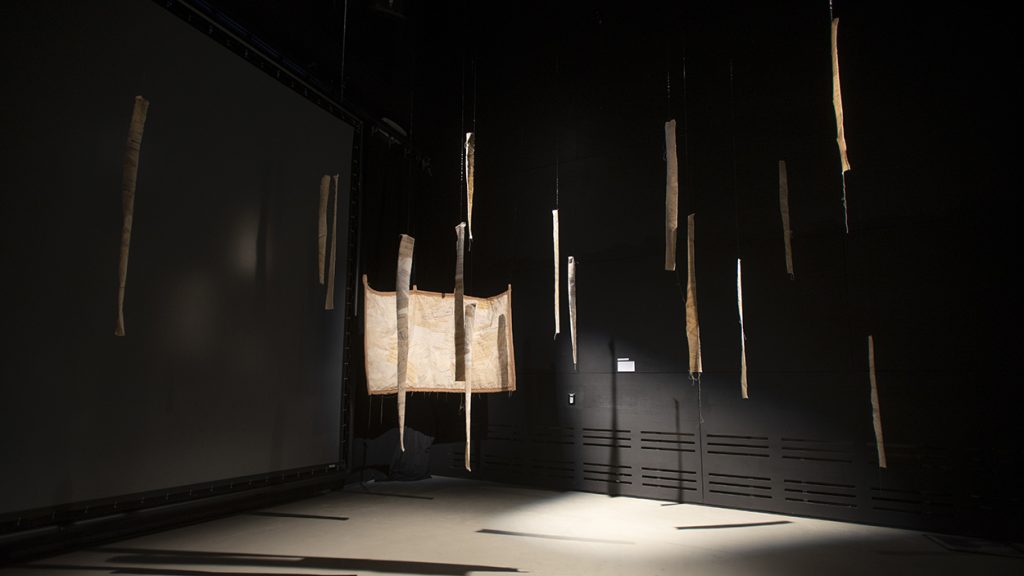
Where science and the arts meet
UMaine arts and STEM students engage in interdisciplinary research and learn how to become better scholars.
In academia and beyond, fields are becoming less and less siloed. This is especially true at the University of Maine, where the administration and researchers prioritize interdisciplinary research projects because of how they are able to approach large problems and questions. Chemists, engineers, economists and educators often team up on such projects. UMaine is going a step further and working to incorporate the arts.
Susan Smith is an associate research professor who serves as director and graduate student coordinator of UMaine’s Intermedia Program. In these roles, she teaches and works with Intermedia students pursuing MFA, M.A. and interdisciplinary Ph.D. degrees. The program is designed to involve students in interdisciplinary research, and Smith stresses the significance of that to her students.
“I want to foster with the students a realization that whatever we are making as artists does not function in a vacuum,” Smith said. “It is in relation to whatever is happening around us, whether that be the university and research or inclusivity and diversity. Whatever they are making has a connection to and an impact on the world.”
She points to the establishment of the UMaine Arts Initiative as a key development for this work. Funding from the initiative helped put arts on an even playing field with other disciplines. The initiative helped advance conversations and establish projects as artists and scientists connected.
“This funding started to elevate the way we thought about the arts at UMaine,” Smith said. “There are common threads between arts and sciences. The boundaries between arts and science are more diffuse than we thought.”
Smith worked with Assistant Professor of Civil and Environmental Engineering Onur Apul, who she had previously collaborated with, to bring interdisciplinary work into the classroom. With a combined curriculum, students in Smith’s Social Practice class worked with Apul’s students, meeting throughout the semester in both the studio and lab. Students formed groups to develop collaborative projects focused on PFAS nanotechnology. The semester’s work was displayed at the Innovative Media Research and Commercialization Center and as Smith explained, brought a diverse group of community members together around the work.
The class demonstrated to the students how art can be used to communicate, and how art, much like science, is a process. “Art can provide a way of communicating with the wider world. It can show science through an emotional lens that is sometimes left out,” Smith said. “It is challenging for them to acknowledge that they are not experts in both fields, but you do not need to be an expert in both. We need to acknowledge that it is a process and that they bring new perspectives to it.”
Intermedia students also worked with researchers at UMaine’s Process Development Center to explore the application of nanocellulose fibers as a new medium for artists. Nanocellulose is a natural polymer and promising biomaterial derived from wood pulp. This sustainable material has a wide range of applications, from paper and packaging to insulation. Through this collaboration, students investigated nanocellulose as a potential component of artistic research, and how they can contribute to the field of knowledge concerning this innovative material. Students engaged in research-based practice, an approach many artists are not familiar with, which fostered new discussions and ways of looking at both their physical work and the process of creating art in a way that could be communicated to researchers.

Interdisciplinary practices like those spearheaded by Smith are increasing in education and research at UMaine and nationwide. “I think the fact that major NSF grants and external grant funding consider art aspects relevant is a huge step,” said Smith. “Do I think we are there? No, but I am gratified that it is being recognized that collaborative work is an important component.”
UMaine strives to be a leader in interdisciplinary collaboration. This work brings together disciplines and asks them to think differently about their research and engage with it in new ways. It enriches the educational experience for students helping make them well-rounded scholars and cultivates the diverse teams needed to tackle large research projects.
“A reciprocal relationship between science and art in and of itself can be the pathway to innovation and solutions to the current crisis we face as a society,” Smith said.
